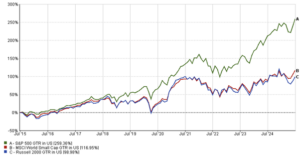Recent Performance and Background
The New Zealand dollar (NZD) recently hit a one-year low, with forecasts suggesting it could weaken by another 6% in the coming months. This decline stems from expectations of significant interest rate cuts by the Reserve Bank of New Zealand (RBNZ) as the nation grapples with a slowing economy. The swaps market has already priced in a 50-basis-point cut for this week, with some analysts even predicting a 75-basis-point reduction.
So far this quarter, the kiwi has dropped around 8%, affected not only by RBNZ’s monetary policy adjustments but also by external factors such as a strong U.S. dollar and fears over potential U.S. tariffs on Chinese goods, which could impact global economic growth.
Strong USD and Global Economic Uncertainty
The U.S. dollar's continued strength has weighed heavily on non-USD currencies like the kiwi. Concerns over a possible return of Trump-era tariffs on China add to the uncertainties surrounding global trade and growth. Analysts suggest that under such circumstances, the NZD could fall as low as $0.55 in the coming year.
Westpac Banking Corporation projects that the kiwi could dip to $0.58 by year-end, with an "extreme low target" of $0.55 either later this year or in early 2024. If NZD breaches the October 2023 low of $0.5774, it could test the 2022 low of $0.5512, as there is little technical support in between these levels.
Technical Factors and Short-Term Risks
From a technical perspective, the NZD is currently in oversold territory, suggesting potential short-term pullbacks. However, a significant risk remains if the RBNZ's monetary policy stance turns out to be less dovish than expected. With services and core inflation still running above RBNZ’s target range of 1%-3%, the central bank may adopt a cautious approach and resist bringing the official cash rate too close to its estimated neutral level.
According to David Forrester, Senior FX Strategist at Credit Agricole, RBNZ might not deliver the dovish tone the market anticipates. This hesitation could limit the extent of NZD’s depreciation in the near term.
Investor Strategies
In this challenging environment, investors should closely monitor the RBNZ’s policy direction and global economic developments. While the oversold condition of the NZD may trigger short-term rebounds, the currency’s overall trend remains tilted to the downside. However, if RBNZ’s tone is less dovish than expected, it might provide some support for the kiwi and mitigate further declines.
In conclusion, the future of the NZD largely depends on RBNZ’s actions, the global economic outlook, and the continued strength of the U.S. dollar. For forex market participants, staying agile and implementing effective risk management strategies will be crucial in navigating these turbulent times.





